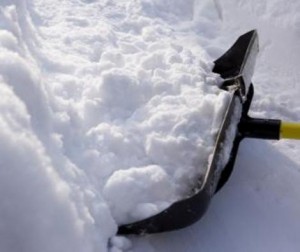 Snow removal is more than just another necessary household chore. All that bending and heavy lifting can put you at serious risk for injury. Snow removal can be especially dangerous if you do not exercise regularly.
Snow removal is more than just another necessary household chore. All that bending and heavy lifting can put you at serious risk for injury. Snow removal can be especially dangerous if you do not exercise regularly.
According to the 2009 US Consumer Product Safety Commission:
- Approximately 16,500 people were treated in hospital emergency rooms for injuries that happened while shoveling or removing ice and snow manually
- The most common injuries associated with snow removal include sprains and strains, particularly in the back and shoulders, as well as lacerations and finger amputations.
General Tips for Safe Snow Clearing
- Check with your doctor. Because this activity places high stress on the heart, you should always speak with your doctor before shoveling or snow blowing. If you have a medical condition or do not exercise regularly, consider hiring someone to remove the snow.
- Dress appropriately. Light, layered, water-repellent clothing provides both ventilation and insulation. It is also important to wear the appropriate head coverings, as well as mittens or gloves and thick, warm socks. Avoid falls by wearing shoes or boots that have slip-resistant soles.
- Start early. Try to clear snow early and often. Begin shoveling/snowblowing when a light covering of snow is on the ground to avoid dealing with packed, heavy snow.
- Clear vision. Be sure you can see what you are shoveling/snowblowing. Do not let a hat or scarf block your vision. Watch for ice patches and uneven surfaces.
Tips for Snow Shoveling
- Warm-up your muscles. Shoveling can be a vigorous activity. Before you begin this physical workout, warm-up your muscles for 10 minutes with light exercise.
- Pace yourself. Snow shoveling and snow blowing are aerobic activities. Take frequent breaks and prevent dehydration by drinking plenty of fluids. If you experience chest pain, shortness of breath, or other signs of a heart attack, stop the activity and seek emergency care.
- Proper equipment. Use a shovel that is comfortable for your height and strength. Do not use a shovel that is too heavy or too long for you. Space your hands on the tool grip to increase your leverage.
- Proper lifting. Try to push the snow instead of lifting it. If you must lift, do it properly. Squat with your legs apart, knees bent, and back straight. Lift with your legs. Do not bend at the waist. Scoop small amounts of snow into the shovel and walk to where you want to dump it. Holding a shovelful of snow with your arms outstretched puts too much weight on your spine. Never remove deep snow all at once. Do it in pieces.
- Safe technique. Do not throw the snow over your shoulder or to the side. This requires a twisting motion that stresses your back.
via Prevent Snow Shoveling and Snowblowing Injuries -OrthoInfo – AAOS.
